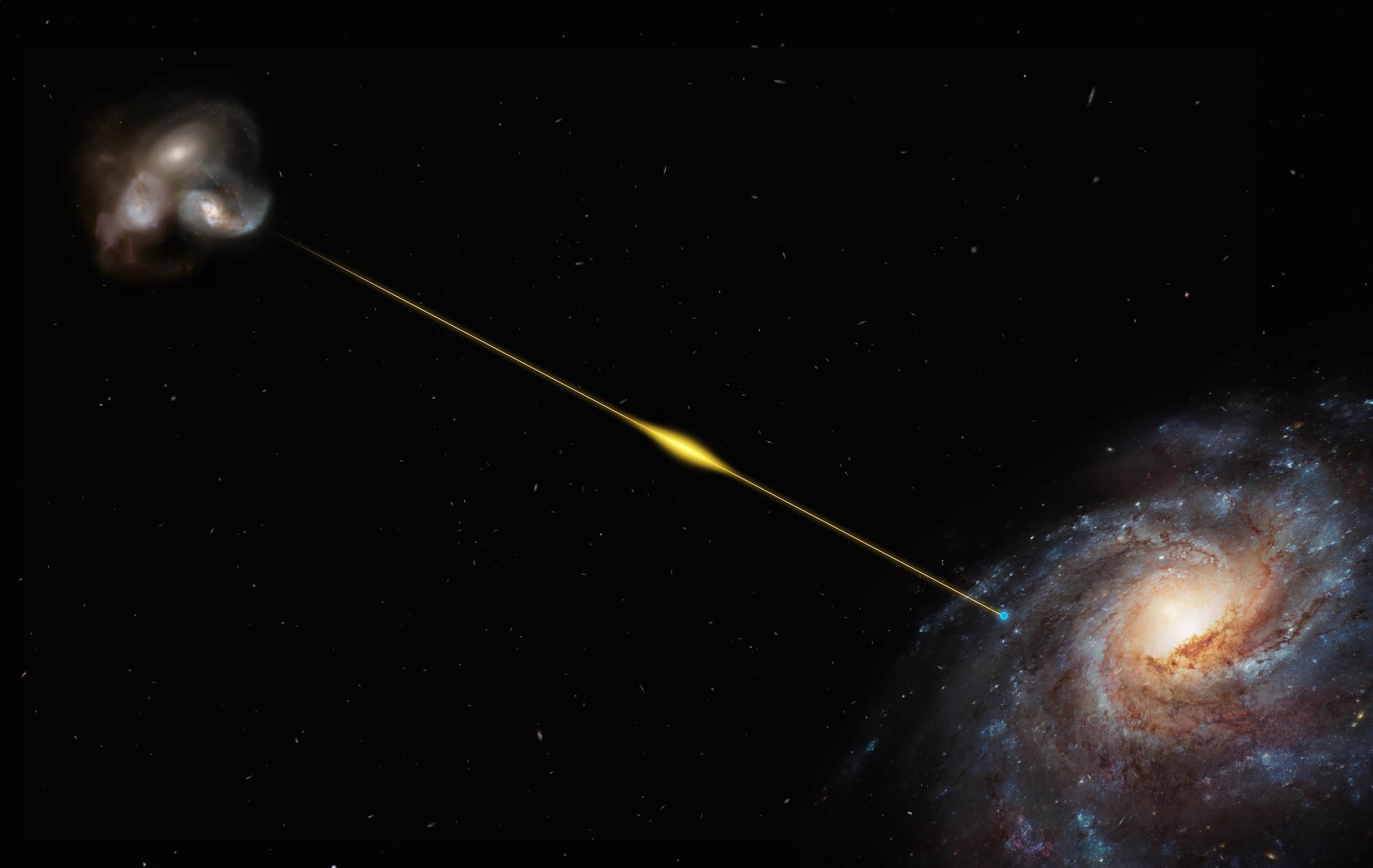
The challenge of determining the universe’s mass has long intrigued astronomers. A recent discovery, as detailed in Science, offers new insights into this profound question. An ancient fast radio burst (FRB) may provide answers.
As the name suggests, fast radio bursts are short, powerful bursts of radio waves. Their significance in this context is their potential connection to the so-called “missing” matter between galaxies. This recent FRB, detected by the Commonwealth Scientific and Industrial Research Organisation’s (CSIRO) Australian Square Kilometer Array Pathfinder (ASKAP) radio telescope, hails from about eight billion years ago. But what makes it unique is its potential as a tool for gauging the universe’s mass.
According to the study, the source of this FRB, coined FRB 20220610A, traces back to a merging cluster of two or three galaxies. This revelation bolsters prevailing theories regarding the origins of FRBs which have puzzled scientists since their first discovery in 2007. Current telescopic technology has limitations, and the researchers believe that eight billion years is the most extended distance within which we can accurately locate and discern FRBs.
This aligns with an idea put forth by the late astronomer Jean-Pierre ‘J-P’ Macquart. He proposed that the distance an FRB has traveled could indicate the amount of diffuse gas it passed through between galaxies. In essence, the farther the FRB, the more matter it encountered, allowing us to estimate the universe’s mass.
However, there’s a problem. Current methods for calculating the universe’s weight give inconsistent results as Swinburne University of Technology associate Ryan Shannon, a study author, points out.
“If we count up the amount of normal matter in the Universe – the atoms that we are all made of – we find that more than half of what should be there today is missing.”
Is this missing matter hiding between galaxies? Shannon believes FRBs might help solve this puzzle.
“We think that the missing matter is hiding in the space between galaxies, but it may just be so hot and diffuse that it’s impossible to see using normal techniques. Fast radio bursts sense this ionized material. Even in space that is nearly perfectly empty they can ‘see’ all the electrons, and that allows us to measure how much stuff is between the galaxies.”
In practical terms, if this relationship holds true, FRBs become more than just cosmic phenomena. They become essential tools in the effort to determine the universe’s mass. Instruments like ASKAP and the upcoming international Square Kilometre Array telescopes to be based in Australia and South Africa, respectively, play a crucial role in this endeavor. They’re not just for observing space but vital for understanding the universe’s structure and weight.
“While we still don’t know what causes these massive bursts of energy, the paper confirms that fast radio bursts are common events in the cosmos and that we will be able to use them to detect matter between galaxies, and better understand the structure of the Universe,” Shannon said.




